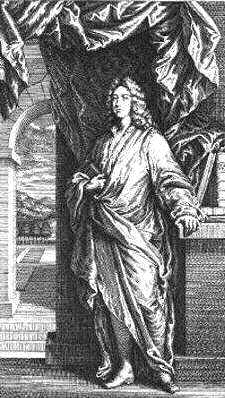| Profile | Major Works | Resources |
Anthony Ashley Cooper, Earl of Shaftesbury, 1671-1713.

17th C. English aristocrat and hedonic philosopher, progenitor of the Scottish school of moral sense.
Anthony Ashley Cooper (third Earl of Shaftesbury) was the grandson of the formidable namesake Anthony Ashley Cooper (first Earl of Shaftesbury), the famous chancellor of England under King Charles II and later leader of the opposition to the future King James II. The young Shaftesbury was raised in his grandfather's house and educated by private tutors under the directions of the philosopher John Locke. After the Glorious Revolution of 1688 had rehabilitated his family, the young Shaftesbury went into public life. In 1694, he was elected to the House of Commons, serving the Whig party of King William III. However, finding Parliamentary life a bit trying for his shy character and sickly disposition, he served only one term and then fled to the safe anonymity of Holland.
In 1699, with the death of his father, the young nobleman returned to England and (reluctantly) took up his official duties as the third Earl of Shaftesbury. But with the ascension of Queen Anne and the rise of the Tories in 1702, Shaftesbury found himself on the wrong side of the political fence and withdrew into retirement on his estates.
Shaftesbury's claim to fame rests on his youthful Inquiry concerning Virtue and Merit (1699, published by John Toland without Shaftesbury's permission). This treatise, much influenced by Locke, laid down an alternative theory of moral sense, in opposition to the egoistic theories of Thomas Hobbes. Shaftesbury's ethical philosophy is articulated once more in the form of a fictitious dialogue in the Moralists (1709).
Hobbes had abandoned the rational, religious and dutiful theories of ethics to reduce morality essentially to the egoistic hedonistic passions of man. Altruistic or benevolent acts, Hobbes asserted, are always rooted in some form of self-interested behavior - the desire for reward, praise, etc. Shaftesbury attempted to subvert the crass implications of Hobbes's theory, not by returning to older theological arguments, but rather by insisting that benevolence too is a passion in its own right. Repeatedly comparing morality to art, virtue with beauty, Shaftesbury proposes the existence of a natural, innate 'moral sense', just as there is an innate aesthetic taste, 'a first principle in our constitution and make', characterized (but not solely) by benevolent affections. (Shaftesbury speaks of reason 'controlling' passions, but does not seem to make much use of it in his theory.) He used examples of parental affection, zeal for posterity, mirth in social contexts, etc. as evidence that public affections were natural, and not reducible to self-interest.
Shaftesbury's theory is rather simple, and sometimes mocked as shallow and wishful. Bernard de Mandeville called Shaftesbury's notions "a High Compliment to Mankind", but "What pity it is that they are not true!" (Mandeville, 1723). Nonetheless, identification of a 'moral sense', independent of religious teachings, and his attempt to combine it, or at least make it not inconsistent with, hedonics was highly influential on the Scottish Enlightenment, particularly Frances Hutcheson, David Hume and, through them, Adam Smith.
Shaftesbury's writings on religious enthusiasm (1708, 1709) advocated the use of ridicule, rather than the heavy hand of censorship or test acts, to deal with false or dangerous opinions.
In 1711, he collected his essays for publication as Characteristics, including as its third volume, Miscellaneous Reflections, further thoughts and clarifications of his earlier writings, as well as a rambling set of speculations on all manner of subjects (including a defence of 'free thinking' in religion, that would provoke Berkeley's Alciphron).
In 1711, pressured by illness, Shaftesbury traveled to France and Italy, looking for a health sanctuary to recuperate. In Italy, he wrote his essay on aesthetics (Hercules), posthumously published in later editions of the Characteristics. He died shortly after in Naples, at the premature age of 42.
|
Major Works of Anthony Cooper, Lord Shaftesbury
|
|
HET
|
|
Resources on Lord Shaftesbury
|
All rights reserved, Gonçalo L. Fonseca
